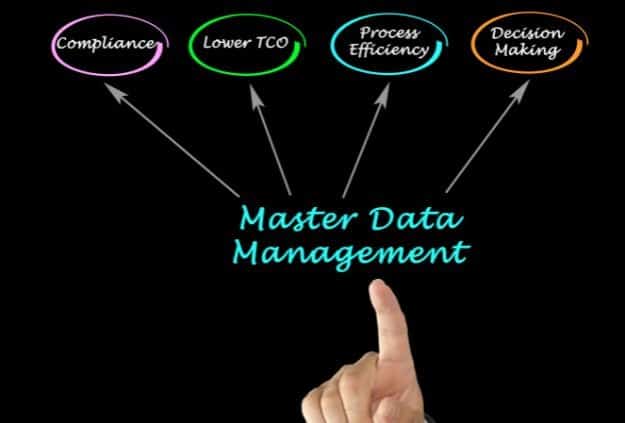Best Master Data Management Strategies
While a right master data management strategy has numerous benefits — higher operational efficiency, business insights, and enhanced compliance level — you cannot pursue all of them simultaneously. Especially in case you’ve never practiced master data before. You need to choose, so let’s have a look at these three basic MDM strategy options to see the difference between them.
1. Why Focus Is Important?
Any business move starts with answering a question “Why is it necessary to do?” The answer derives from a general strategy, and this strategy is always focused. No corporation is successful without a clear goal set for a short-to-medium term and a long-term vision. The same is right for master data governance, though as the topic is rather new for many companies there may be over-expectations from it.
We recommend you set clear business goals to be achieved through the implementation of modern master data handling methods. Otherwise, you may build a superb data architecture that will remove most serious problems and bring order to records, eliminate duplicates, but will not give as much as it could.
Different master data strategies outlined in the beginning of the post may look alike, but do require a bit different functions to involve and a bit different business mindsets.
2. Higher Productivity
An increase in productivity of corporate processes comes from clean, well-organized, non-duplicated, and consistent records. The connection between the rightfully stored and handled data and a hike in efficiency is the same as between an order in your workplace and your work performance. You don’t waste time on finding a phone number of a colleague or a client you need to call. You don’t forget about a business meeting because a sticky note with a reminder about it fell from a monitor — this info was put in your day planner in the right place, etc.
In business, it’s about the reduction of time spent for looking for, retrieving, handling, and transfer of records as well as the accuracy of them. This speed translates into fast operations, while the accuracy gives the reduction of errors.
An MDM strategy in this case centers around a design of the master data governance. A company primarily needs to remove excessive data, first of all, duplicates, from its multiple databases, find formats convertible with each other when necessary, and build a data architecture targeted at fast, simple data handling. Back to your workplace — you’re just doing a clean-up to unload your brain from many things that occupy space and time, consume your attention, but you don’t use them because they are not of use or outdated.
Your management focus here would be hiring the right people for this “clean-up,” building a data architecture and having staff trained in records handling.
3. Business Insights
Getting useful information by big data tools is normally seen as the next step in master data management after you’ve finished the “clean-up” and got records handling right. But it can be the first step too. One way or another, it’s a different MDM strategy.
In this case, you use a company’s records to find hidden correlations or trends that cannot be seen through a superficial analysis. A computer’s brain that processes a myriad of data per second is able to find out something you can further take advantage of to boost profits. For example, it can reveal an unexpected link between sales and gender in certain locations or find out that sales of a product strongly depend on a factor you didn’t take into account.
In this case you need a properly functioning MDM system in place (see the chapter High Productivity) as poor-quality data will not yield high-quality results.
Next, you need to have a clear vision of the development of your business as big data technologies are not producing good results without a clear task you feed to them. And such a task comes from a clear business vision.
On the hiring side, you will need not only big data specialists but also creative marketing staff that can look into the future and efficiently use the insights mined by big data “magicians”.
4 Better Compliance Level
Getting a fine slapped by a government watchdog is an unpleasant thing not only from a financial point of view. It also brings reputation risks and a lowered image in the eyes of markets, investors, and partners. Even a tiny mistake leading to a modest fine says there is a crack in a management system.
Master data management significantly reduces the risk of noncompliance by cleaning up records, removing conflicts between various databases, and keeping datasets consistent and complete.
In this case, the master data management strategy only a little differs from the strategy seeking a higher productivity. After you’ve done a clean-up and have got a data architecture that reflects the company’s goals, you need to appoint those who are responsible for each compliance-sensitive topic. Those in charge will mind the right master data handling and propose amendments to the data architecture and governance policy to keep up with changes which the business environment offers.
Synopps can implement all of those strategies or a combination of a few of them. We’d recommend you start with an analysis of a company’s goals and setting criteria for the achievement of these goals. After you’ve done this, an understanding of which part to select is likely to come.







